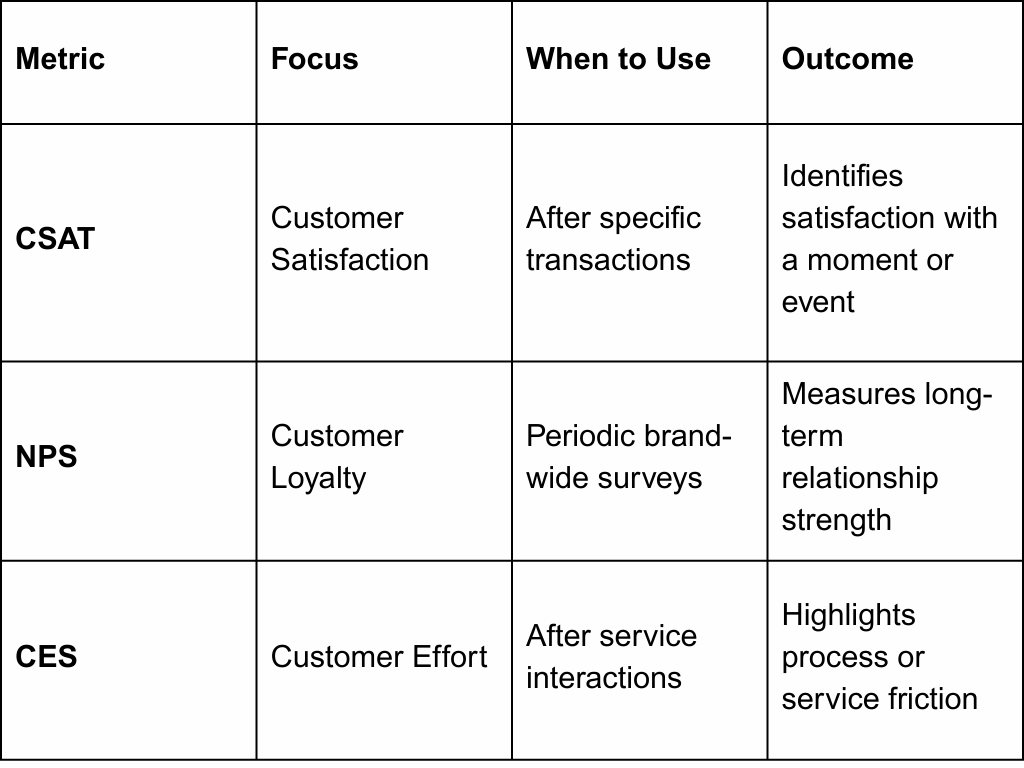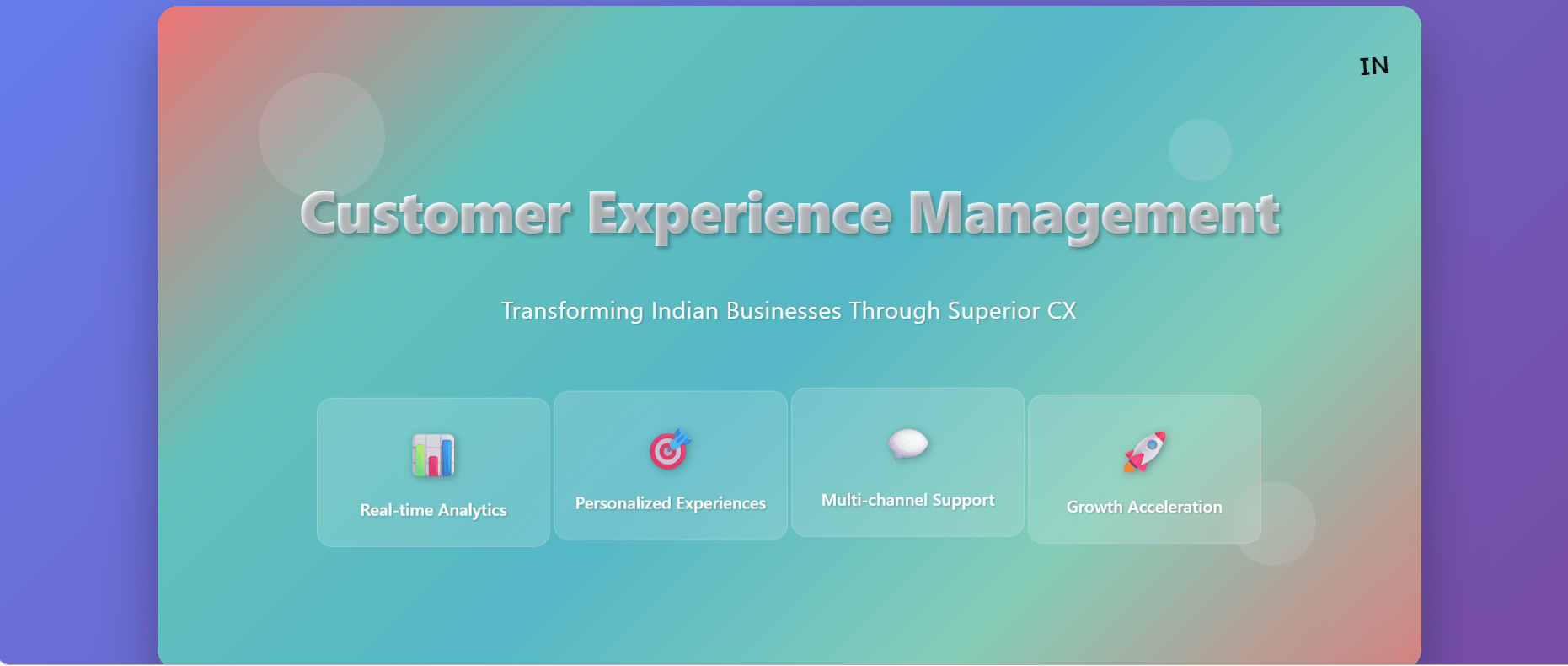Introduction
When it comes to measuring customer experience (CX), choosing the right customer experience metrics is crucial. Three popular metrics dominate the landscape: Customer Satisfaction Score (CSAT), Net Promoter Score (NPS), and Customer Effort Score (CES).
Each serves a different purpose. Understanding when and how to use them can elevate your CX program and drive better business outcomes.
CSAT vs NPS vs CES Infographic

What is CSAT?
Customer Satisfaction Score (CSAT) measures how satisfied customers are with a specific interaction, product, or service.
Typical question:
“How satisfied were you with your recent experience with [Company/Product]?”
Scale: Often 1-5 or 1-7.
Use Case:
- – After a customer support call
- – Post-purchase feedback
- – Following a service experience
CSAT is one of the most direct customer experience metrics that provides quick feedback on how well your touchpoint performed.
What is NPS?
Net Promoter Score (NPS) measures overall customer loyalty by asking customers how likely they are to recommend your company.
Typical question:
“On a scale of 0 to 10, how likely are you to recommend [Company/Product] to a friend or colleague?”
Scale: 0 to 10, with Promoters (9-10), Passives (7-8), and Detractors (0-6).
Use Case:
- – Measuring brand loyalty over time
- – Benchmarking customer sentiment across industries
- – Tracking customer relationship health
NPS is widely considered one of the most strategic customer experience metrics to evaluate long-term brand perception.
What is CES?
Customer Effort Score (CES) measures how easy it was for customers to get their issue resolved or complete an action.
Typical question:
“How easy was it to resolve your issue with [Company/Product]?”
Scale: Typically 1 (Very Difficult) to 5 (Very Easy) or similar.
Use Case:
- – After a support ticket or service request
- – Measuring digital platform usability
- – Reducing friction points in customer journeys
CES is increasingly popular among customer experience metrics for identifying process or usability gaps.
Quick Comparison Table

Which Metric Should You Choose?
- – Use CSAT when you want immediate feedback on a specific experience.
- – Use NPS when you want to understand overall brand loyalty.
– Use CES when you want to identify and fix points of friction in service or processes.
Pro Tip: Many top companies use a combination of all three customer experience metrics at different touchpoints!
How Zykrr Helps
ment platform empowers businesses to:
- – Deploy CSAT, NPS, and CES surveys with ease
- – Analyze customer sentiment across different customer experience metrics
- – Implement closed-loop feedback actions seamlessly
- – Benchmark performance against industry standards
Start measuring smarter. Talk to Zykrr’s CX experts
Frequently
Asked Questions
-
What is the main difference between CSAT and NPS?
CSAT measures satisfaction with a specific interaction, while NPS measures overall loyalty and likelihood to recommend.
-
When should I use CES instead of CSAT or NPS?
Use CES when you want to assess how easy (or difficult) it is for customers to resolve their issues or complete actions. It highlights friction points.
-
Can I use CSAT, NPS, and CES together?
Yes! Many organizations combine these customer experience metrics to get a comprehensive view across different stages of the journey.
-
Which metric is best for measuring customer support performance?
CES is often the best for customer support as it measures effort required to resolve an issue. CSAT can also be used post-interaction.
-
How often should I run NPS surveys?
Typically, NPS surveys are run quarterly or bi-annually to track loyalty trends over time.





















